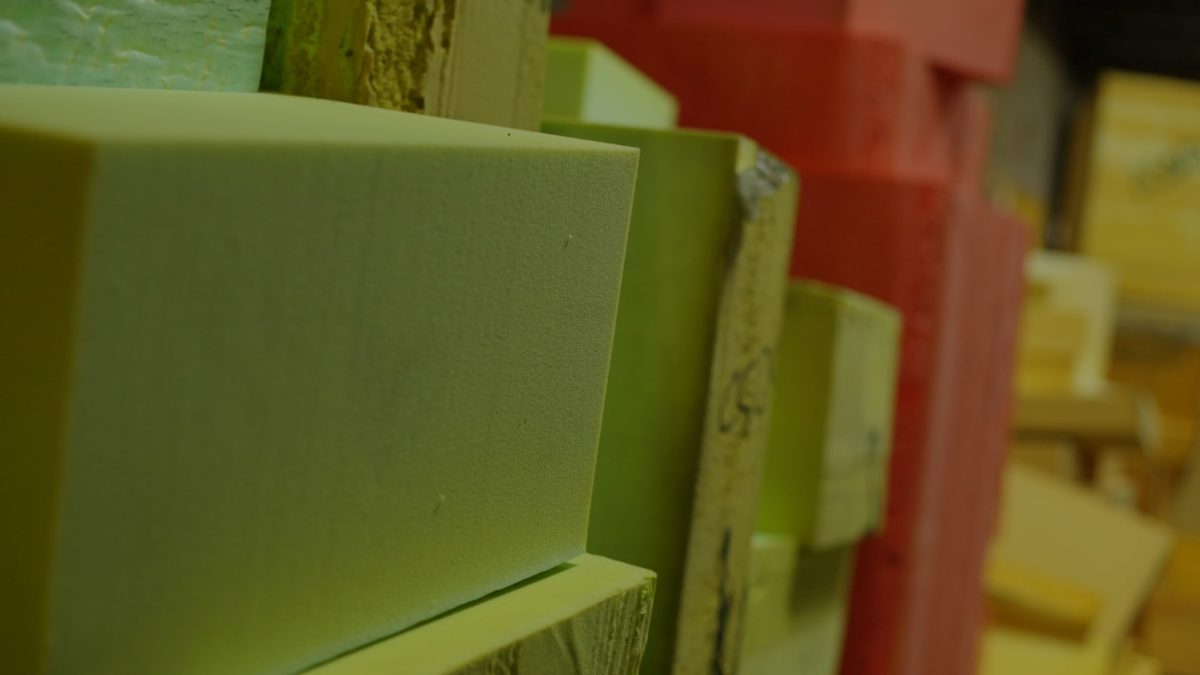When it comes to selecting a foam material, there are many testing results and technical specifications to consider. Some involve compressing a foam to see how it performs in a compressed state. Two of the more common values you will see are indent deflection and compression set. What’s the difference between the two, and how do they relate to the foam you are choosing? Find out how these values can help you select the right foam for your application.
What is Indent Deflection in Foam?
Indent force deflection (IFD) is the testing standard in which the load bearing capacity of a piece of foam is measured. In the simplest of terms, it measures how firm or stiff a piece of foam is when a force is applied. It is measured in pounds force per 50 in.2 at a given percent (generally 25%) deflection of the foam. Using ASTM standard D3574, testers indent the foam until it reaches 25% of the foam’s initial thickness, measuring the force in pounds required to keep the foam indented in this state. More pounds mean the foam has a higher load bearing capacity.
Indent deflection is a good measurement for foam used applications like residential and commercial cushioning as it gives you a good idea as to the firmness of the type of foam. If you are in the market for foam types that will be used for cushioning applications, this is a particular test you will want to pay close attention to.
What is Compression Set in Foam?
Compression set is the measurement of how much a foam does not rebound. It is the deformation of a piece of foam after a force or load is applied to it. While the indent reflection is the force that it takes to compress a piece of foam down to 25% of its original thickness, the compression set is how much it does not recover after the force has been applied to it.
Using ASTM standard D3574, compression set is measured by compressing a piece of foam between two plates until it reaches about 50% compression. The foam is held at that compression for a certain amount of time and at a certain temperature before it is released. It is then measured again to determine how much thickness it has lost after rebounding. Compression set is measured via a percentage, whereby the value is the percentage of thickness lost after the foam has been compressed and allowed time to rebound.
Compression set is a good foam value to know when you are choosing materials for applications like foam gaskets. The foam’s compression set will give you a good idea as to the material performance in preventing against leaks as well as how long you can expect it to hold up over time.
Need help choosing the right foam material? We can help. Get in touch with Amcon today to choose the best material for your application.


